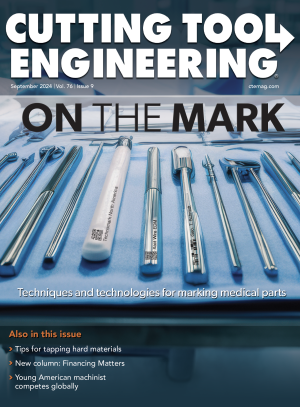Maintaining a thoughtful, yet nimble financial strategy plays a pivotal role for companies that meet customer needs during and after challenging economic periods. Just as we know opportunity favors those who are prepared, those who are caught flat-footed are prone to mistakes. For instance, completing a transaction for short-term benefit with the wrong terms or at the wrong point in the life cycle of a business can result in an unexpected setback, especially now with continued economic uncertainty and steady but higher-than-desirable interest rates.
If expansion is a priority for your company, the time to plan accordingly is now. Achieving optimal readiness for short- or long-term opportunities takes work.
The ups and downs faced by closely held, owner-operated businesses create variables that should be addressed to mitigate risk while pursuing growth. Discussing the timing for these strategies is especially important when exploring expansion capital, a new capital structure or a more efficient solution to stabilize cash flow cycles. Conversations related to these logistical considerations along with proactive planning with financial stakeholders can set your business up for efficient execution of a deal when presented with desirable opportunities that might otherwise be missed.
That said, shops like yours must continually adapt to new technologies, such as additive manufacturing and artificial intelligence. To do so, you need financing solutions that leave room for shifting demand. Staying up to date with developments and trends allows manufacturers to quickly adapt to client needs and increase production levels when necessary. Maintaining that competitive edge, of course, often leads to the purchase of new tools and machinery that require operating capital.
The good news is that there are a range of flexible financing tools and lines of credit that can make equipment and technology upgrades more feasible. To take advantage of these financial tools you first need to ensure that crucial aspects of your financial picture are in good shape. Toward that end, keep the following 10 common loan stumbling blocks in mind as you assess the financial strength of your company.
- No budget — A surprising number of small businesses do not have a set budget, meaning the bank can’t forecast growth. It’s also a sign that it may be too early in the life cycle for a bank to take the risk.
- Minimal understanding of your numbers — If you have a hard time explaining your finances, or relatively simple questions are hard to answer, it leaves you – and your bank – vulnerable should any financial challenges arise.
- Interest rate is your primary concern — Everyone wants the lowest possible interest rate, but if you are talking with a handful of prospective banks, your bank may see you as “rate shopping” rather than seeking a business partnership. Switching banks frequently also leads to questions about your commitment.
- Excessive dependencies — There is risk in being overly reliant on things like a key raw material, one or two huge customers, a labor contract or a patent. High dependence on one or more components of your business puts you at greater risk for sudden failure. Your banking advisor should seek to understand these dependencies and, ideally, help identify ways to minimize that risk.
- Instability, variability — If you operate in an unstable business environment (for example, sporadic access to raw materials), or your industry has frequent highs and lows, you should discuss such issues with your banker to see if there are ways to mitigate any associated risks.
- Turnover ratios lengthening — Slow-selling inventory, too much product, delays in paying your suppliers or collecting payments can worry your banker. As long as there is a good explanation for such scenarios you can help overcome this hurdle by ensuring that your banker understands the situation.
- No skin in the game — If an entrepreneur or small-business owner hasn’t put their money where their mouth is, why should the bank?
- Growth and expansion that is too fast — This may seem counterintuitive, but rapid expansion can mean management may not be able to sustain that growth because it didn’t grow its infrastructure or capital base to keep up.
- Overall cash flow — You should be able to provide your banker global cash flow information, including relevant personal and affiliate financial and debt records that can help banks calculate total cash available to pay for potential loans. While focused on capital for financing, overall marginal or negative cash flow must be addressed.
- No estate plan — Particularly for midsize or larger businesses, having no estate plan puts your business — and therefore financial performance — at risk. What happens to your business if you are no longer around?
Evaluating your loan readiness may even shed some light on a gap in your business strategy that needs to be addressed. Proactively addressing potential “red flags” has benefits to your business beyond increasing your chances of a positive outcome, such as improving your operational processes and efficiencies and developing a trusted relationship with your banker.
The most important takeaway is that business loan decisions are both objective and subjective. Basic financial criteria must be met, but overall impressions, work style, and the ability for the bank and business owner to develop a deeper, trusting relationship matters.








